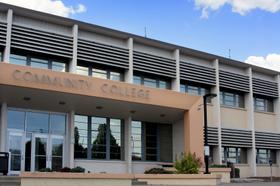Institutions of higher education are just that – where students can continue to learn, grow and develop professionally and personally. Community colleges are particularly adept at this task, offering a wide range of learning opportunities for students of all ages and walks of life. From young students still years from their college years to senior citizens who never want to stop discovering new things, these campuses offer a wealth of learning opportunities. Check out these 10 ways you can make the most of the programs found at your local community college.
Get Ahead in High School
Running Start is a program available through many community colleges in Washington. According to the Tacoma Community College website, this program allows high school juniors and seniors to get a head start on college credits by taking college-level courses while they are still in high school. The program offers many benefits, including saving on college tuition and choosing from a broader course selection. Other states offer similar programs to aspiring college students.
It is important to note that these dual-credit programs are not without their share of requirements. Students are typically expected to maintain a high GPA in their high school courses to qualify for the program. In addition, they will be required to achieve a prescribed GPA in their college coursework as well. College classes may also be offered on weekends and during school holidays, leaving dual-enrollment students little free time.
Finish High School
Many community





















